Search Images
Browse Content (p. 60)
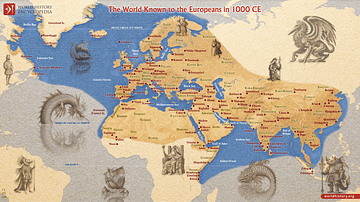
Image
The World Known to Europeans in 1000 CE
In 1000 CE, Europeans had a limited but expanding awareness of the wider world, shaped by trade, exploration, and religious contacts. The Vikings had pushed westward, reaching Greenland and Vinland (North America). At the same time, merchants...
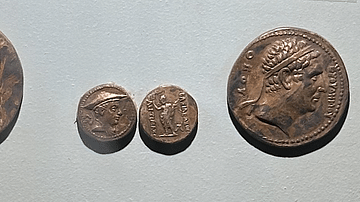
Image
Coins of Antimachus I Theos
Coins of Antimachus I Theos, 185-170 BCE.
Peshawar Museum, Pakistan.
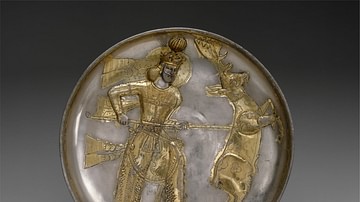
Image
Sassanian Silver Plate with Yazdegerd I Slaying a Stag
Silver plate with Yazdegerd I, slaying a stag. Sassanian Empire, c. 399-420 CE.
Metropolitan Museum of Art, New York.
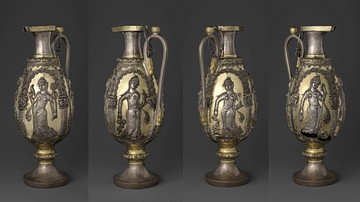
Image
Sassanian Silver Ewer with Female Dancers
Four views of silver ewer with dancing women within arcades. Sassanian Empire, ca. 6th-7th century CE. This object was likely used as a wine jug during celebrations. Its form and decoration shows connections to Greco-Roman and Early Byzantine...
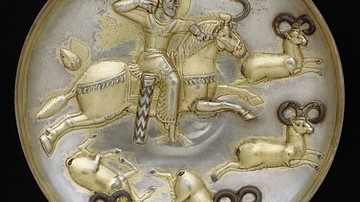
Image
Sassanian Silver Plate with King Hunting Rams
Silver plate with king hunting rams. Sassanian Empire, c. mid-5th–mid-6th century CE.
New York, Metropolitan Museum of Art, New York.
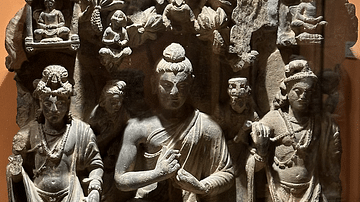
Image
Miracle of Sravasti
A relief showing the miracle of Sravasti, with the preaching Buddha depicted on a lotus throne, while Bodhisattvas are seen on either side. 2nd-3rd century CE.
Peshawar Museum, Pakistan.
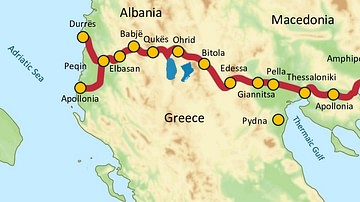
Image
Via Egnatia, 146 BCE to c. 1200 CE
Via Egnatia was a major Roman road in the Balkans, stretching 1,120 kilometers (696 miles) from the Adriatic Sea in the west to the Black Sea and the Sea of Marmara in the east. The western terminus is slightly uncertain, often marked in...
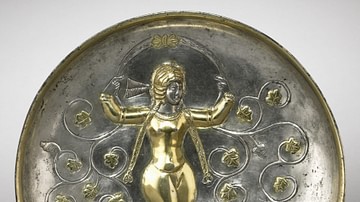
Image
Sassanian Silver Plate with the Goddess Anahita
Silver plate with a full-length female figure standing in its center. She holds an arch above her head. Grapevines grow from the ends of the arch and fill the space around the figure. The female figure is interpreted by scholars as the Persian...
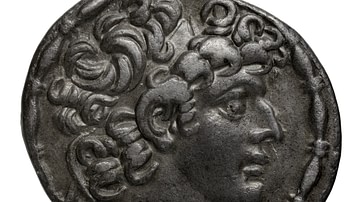
Image
Aulus Gabinius Tetradrachm
Silver tetradrachm of Roman proconsul Aulus Gabinius (d. 47 BCE). Minted at Seleucia in Pieria, 1st century BCE.
Bibliothèque nationale de France, Paris.
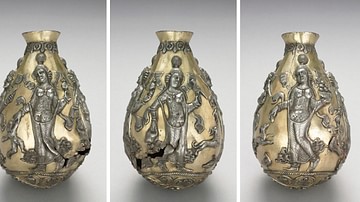
Image
Anahita Vessel
Four views of a Sassanian silver vessel with four female figures, from the Sassanian Empire (224-651 CE), modern-day Iran, c. 300-500 CE. Cleveland Museum of Art. The four female figures on the vessel may be interpreted as dancers or as...